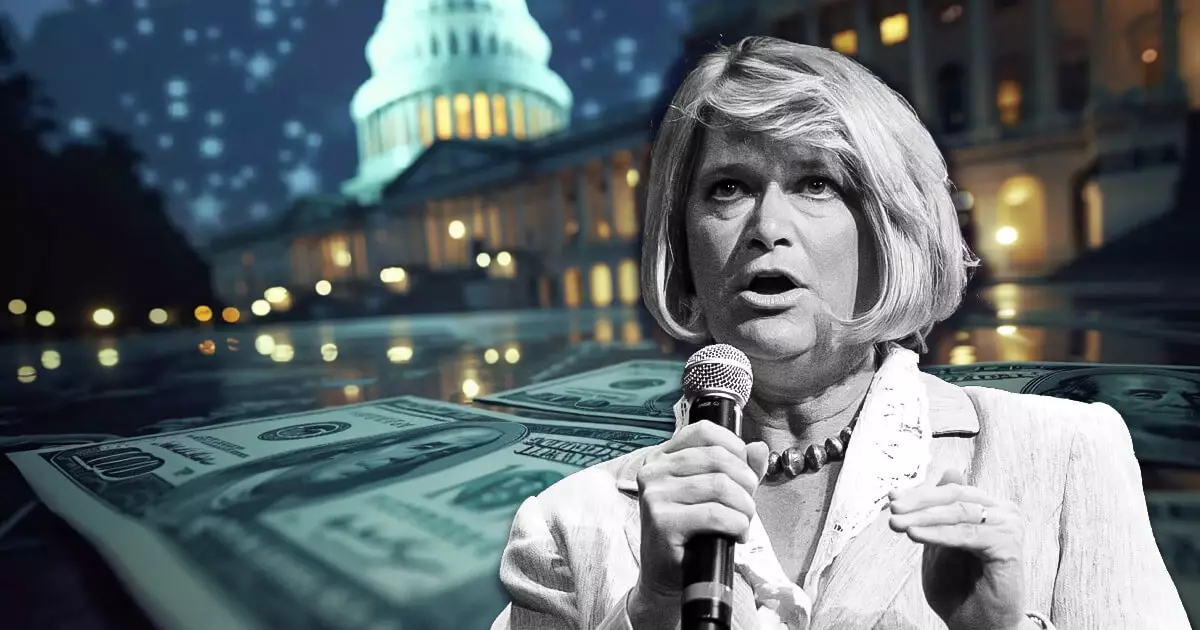The recent confirmation of Michelle “Miki” Bowman as the Vice Chair for Supervision at the Federal Reserve by a scant 48-46 vote marks what could be a defining moment in the narrative of digital asset regulation in the United States. Senator Cynthia Lummis, a known ally of the crypto community, heralded Bowman’s appointment as a pivotal shift, advocating that it signifies a transition towards a more sensible regulatory environment for cryptocurrencies. But how much is this optimism grounded in reality, and could this indeed be the “turning point” the industry desperately needs?
The world of cryptocurrencies has long been mired in uncertainty and regulatory ambiguity, creating a frenzied atmosphere of innovation shadowed by fear. Bowman’s ascension comes during a time when the government is questioning its approach to burgeoning technologies, as she brings a wealth of experience as a Fed Governor since 2018. Her perspective may bridge the gap between the need for regulation and the encouragement of robust financial innovation—a balancing act that is essential for a thriving digital economy.
The Valley of Uncertainty
For far too long, the crypto sector has been burdened with regulatory challenges that stifle innovation. Brought to the forefront by Lummis herself, the industry has suffered under a cloak of political indecision that fails to comprehend the rapid pace at which technology is evolving. The prominent calls for regulatory clarity echo through the halls of Congress, yet policymakers seem entrenched in bureaucratic inertia, making it difficult for businesses to pivot or adapt to new market dynamics.
With Bowman’s commitment to evidence-based regulation, the US financial landscape could potentially transition into an era where innovation is rewarded rather than penalized. This kind of regulatory foresight is pivotal as emerging technologies in finance—particularly in decentralized finance (DeFi) and stablecoins—continue to evolve. Bowman’s role could serve as an incubator for practical regulation that promotes financial services rather than a deterrent that constricts them.
The Importance of a Strong Regulatory Framework
Outdated regulatory frameworks cannot contend with the pace of technological advancement in the financial sector; a changed mindset is essential. Bowman’s nomination holds promise, particularly as she expressed during her Senate confirmation that US banks must embrace new technology to remain competitive. This philosophy could ignite a far-reaching shift in the bureaucratic dialogue surrounding digital currencies and services.
For an industry that has faced a storm of scrutiny and skepticism, having a figure like Bowman, who understands both traditional finance and emerging technologies, presents a unique opportunity to redefine how regulators interact with cryptocurrency firms. The central bank’s cautious openness to digital assets can aid in shaping a coherent strategy that ensures public safety while allowing innovation to flourish.
Immutable Trust: Bridging Institutional Gaps
With Bowman at the helm of regulatory oversight, there is hope that more proactive stances will be taken toward integrating digital assets into the mainstream financial system. This could signal to institutional investors that the sector is moving toward a more reliable regulatory landscape, fostering greater investment in crypto-related services like custody and settlement.
Bowman’s confirmation by no means guarantees that all regulatory hurdles will dissipate overnight. Yet it sets a new tone, one that speaks to the need for a framework that evolves alongside market innovations. With Lummis and other advocates rallying behind her, we could witness the establishment of an ecosystem that encourages innovation while still emphasizing necessary consumer protections.
Can the Fed Adapt?
Although the Federal Reserve does not directly regulate cryptocurrencies, its influence on how banks engage with digital asset firms is undeniable. As Congress debates various legislative proposals surrounding issues such as stablecoin management and the overarching structure of digital asset markets, the ambiguity often creates a standstill—one that can paralyze the sector. The question remains: will the Federal Reserve, under Bowman’s supervision, seize the opportunity to adapt and lead with innovative mindset?
Bowman’s leadership during this formative period will be scrutinized closely. For the crypto defenders and sceptics alike, her actions will upend or uphold the principles of financial inclusion that not only benefit the elite but permeate down to the average American. Turning this ship around into a realm of clarity and collaboration could redefine how both public and private sectors view the digital asset landscape. As we teeter on the precipice of this potential transformation, the stakes have never been higher.















